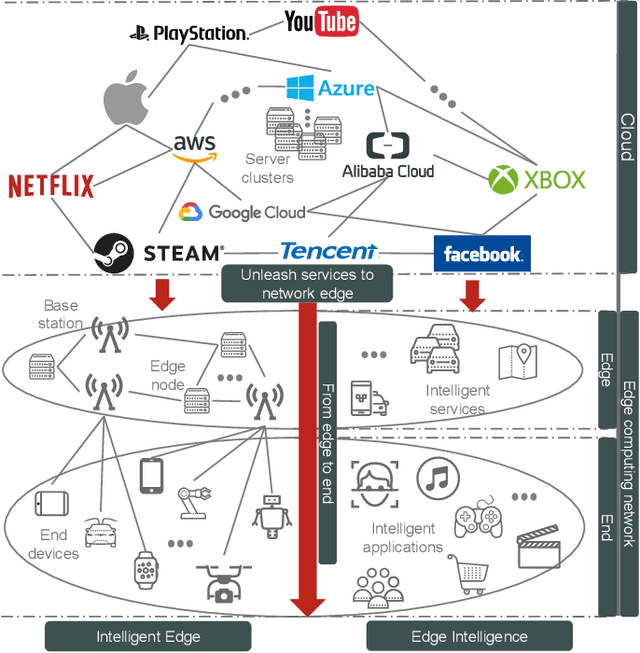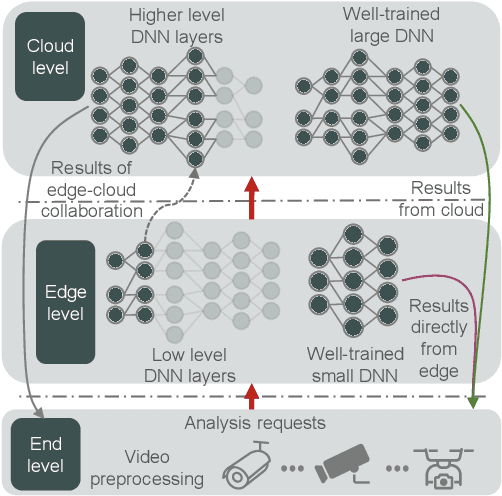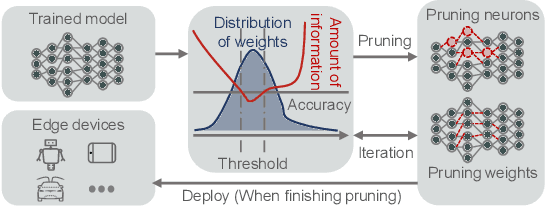Yiwen Han
Tailored Learning-Based Scheduling for Kubernetes-Oriented Edge-Cloud System
Jan 17, 2021



Abstract:Kubernetes (k8s) has the potential to merge the distributed edge and the cloud but lacks a scheduling framework specifically for edge-cloud systems. Besides, the hierarchical distribution of heterogeneous resources and the complex dependencies among requests and resources make the modeling and scheduling of k8s-oriented edge-cloud systems particularly sophisticated. In this paper, we introduce KaiS, a learning-based scheduling framework for such edge-cloud systems to improve the long-term throughput rate of request processing. First, we design a coordinated multi-agent actor-critic algorithm to cater to decentralized request dispatch and dynamic dispatch spaces within the edge cluster. Second, for diverse system scales and structures, we use graph neural networks to embed system state information, and combine the embedding results with multiple policy networks to reduce the orchestration dimensionality by stepwise scheduling. Finally, we adopt a two-time-scale scheduling mechanism to harmonize request dispatch and service orchestration, and present the implementation design of deploying the above algorithms compatible with native k8s components. Experiments using real workload traces show that KaiS can successfully learn appropriate scheduling policies, irrespective of request arrival patterns and system scales. Moreover, KaiS can enhance the average system throughput rate by 14.3% while reducing scheduling cost by 34.7% compared to baselines.
Convergence of Edge Computing and Deep Learning: A Comprehensive Survey
Jul 19, 2019



Abstract:Ubiquitous sensors and smart devices from factories and communities guarantee massive amounts of data and ever-increasing computing power is driving the core of computation and services from the cloud to the edge of the network. As an important enabler broadly changing people's lives, from face recognition to ambitious smart factories and cities, artificial intelligence (especially deep learning) applications and services have experienced a thriving development process. However, due to efficiency and latency issues, the current cloud computing service architecture hinders the vision of "providing artificial intelligence for every person and every organization at everywhere". Thus, recently, a better solution is unleashing deep learning services from the cloud to the edge near to data sources. Therefore, edge intelligence, aiming to facilitate the deployment of deep learning services by edge computing, has received great attention. In addition, deep learning, as the main representative of artificial intelligence, can be integrated into edge computing frameworks to build intelligent edge for dynamic, adaptive edge maintenance and management. With regard to mutually benefited edge intelligence and intelligent edge, this paper introduces and discusses: 1) the application scenarios of both; 2) the practical implementation methods and enabling technologies, namely deep learning training and inference in the customized edge computing framework; 3) existing challenges and future trends of more pervasive and fine-grained intelligence. We believe that this survey can help readers to garner information scattered across the communication, networking, and deep learning, understand the connections between enabling technologies, and promotes further discussions on the fusion of edge intelligence and intelligent edge.
In-Edge AI: Intelligentizing Mobile Edge Computing, Caching and Communication by Federated Learning
Sep 19, 2018



Abstract:Recently, along with the rapid development of mobile communication technology, edge computing theory and techniques have been attracting more and more attentions from global researchers and engineers, which can significantly bridge the capacity of cloud and requirement of devices by the network edges, and thus can accelerate the content deliveries and improve the quality of mobile services. In order to bring more intelligence to the edge systems, compared to traditional optimization methodology, and driven by the current deep learning techniques, we propose to integrate the Deep Reinforcement Learning techniques and Federated Learning framework with the mobile edge systems, for optimizing the mobile edge computing, caching and communication. And thus, we design the "In-Edge AI" framework in order to intelligently utilize the collaboration among devices and edge nodes to exchange the learning parameters for a better training and inference of the models, and thus to carry out dynamic system-level optimization and application-level enhancement while reducing the unnecessary system communication load. "In-Edge AI" is evaluated and proved to have near-optimal performance but relatively low overhead of learning, while the system is cognitive and adaptive to the mobile communication systems. Finally, we discuss several related challenges and opportunities for unveiling a promising upcoming future of "In-Edge AI".
 Add to Chrome
Add to Chrome Add to Firefox
Add to Firefox Add to Edge
Add to Edge